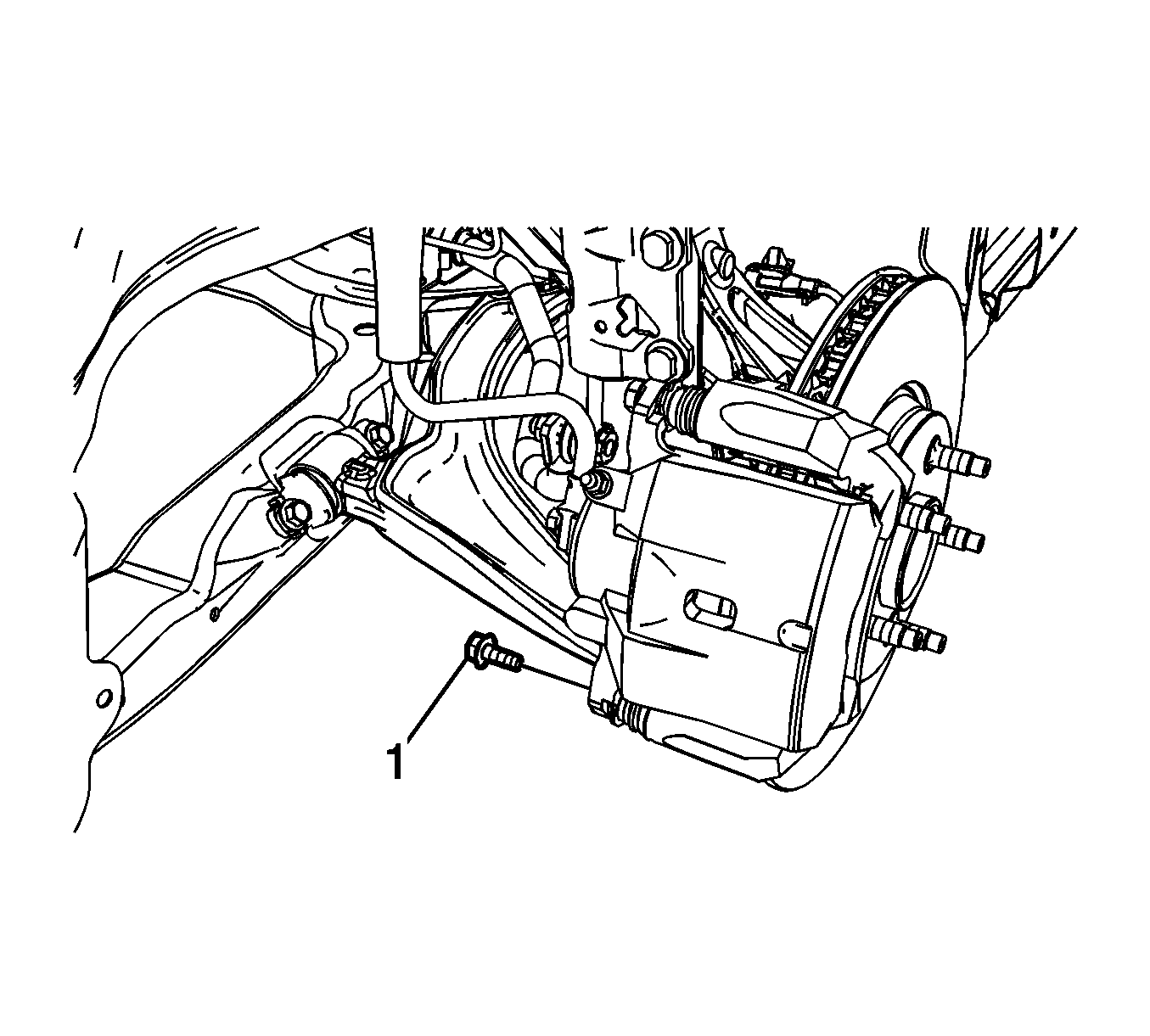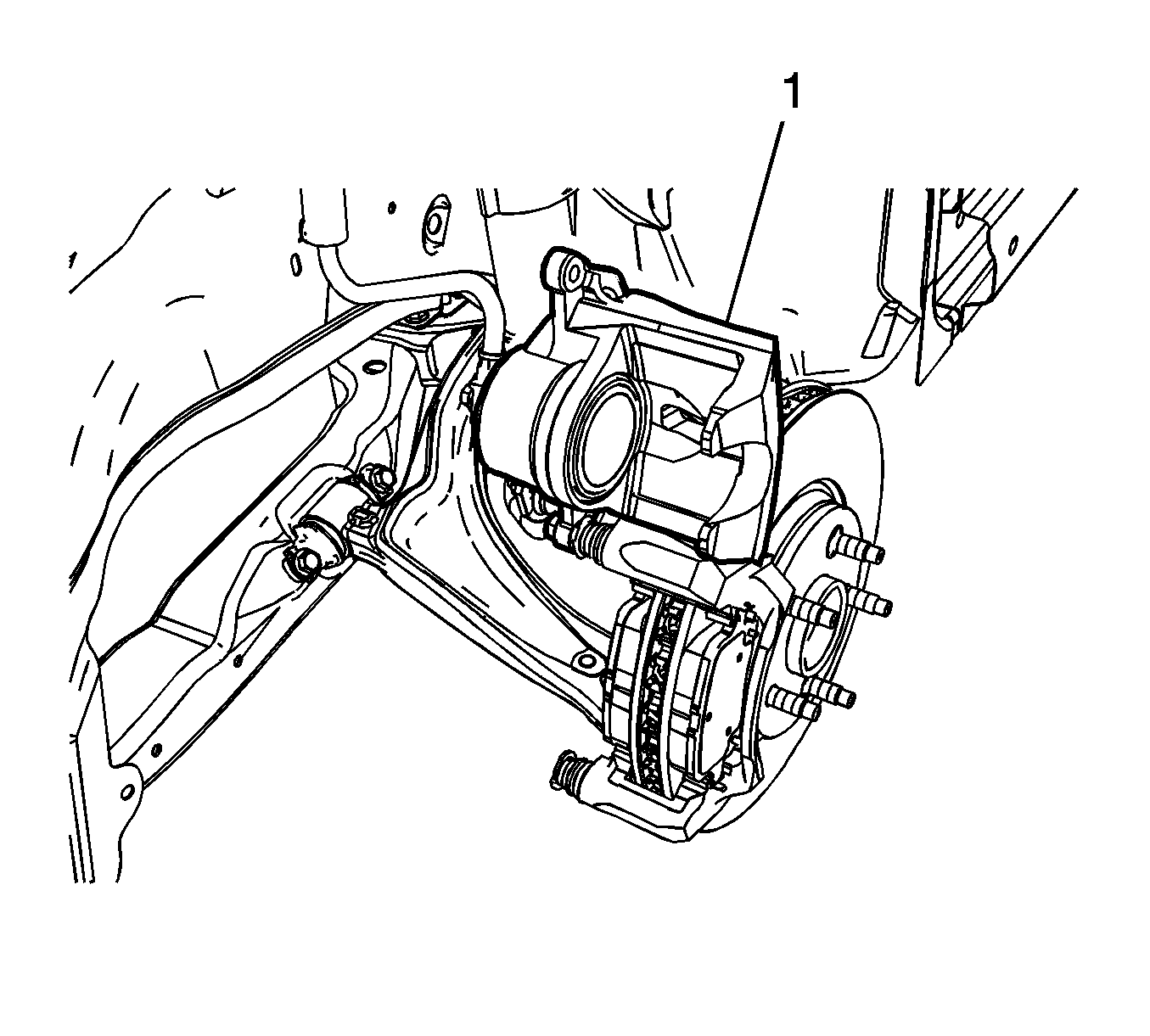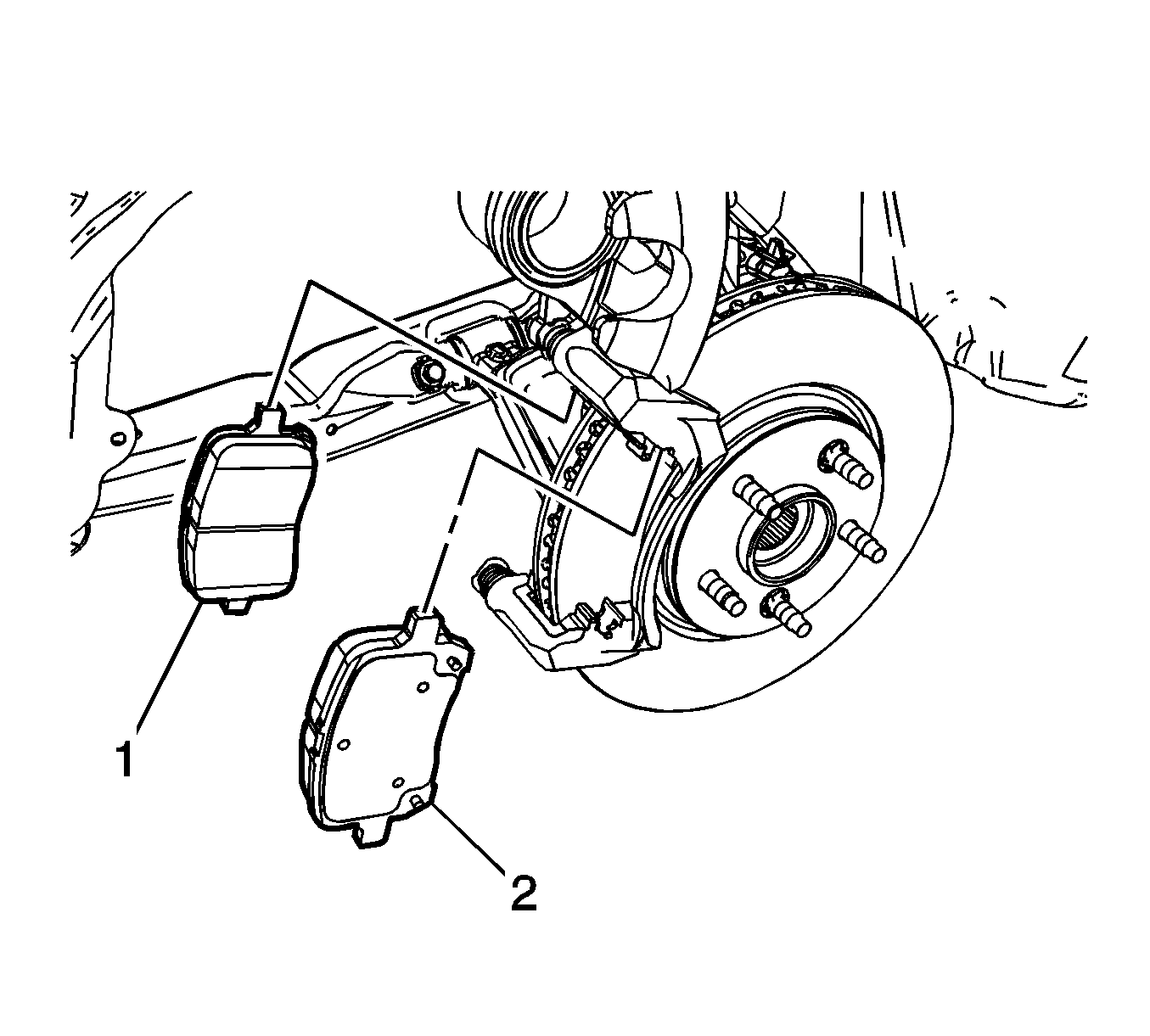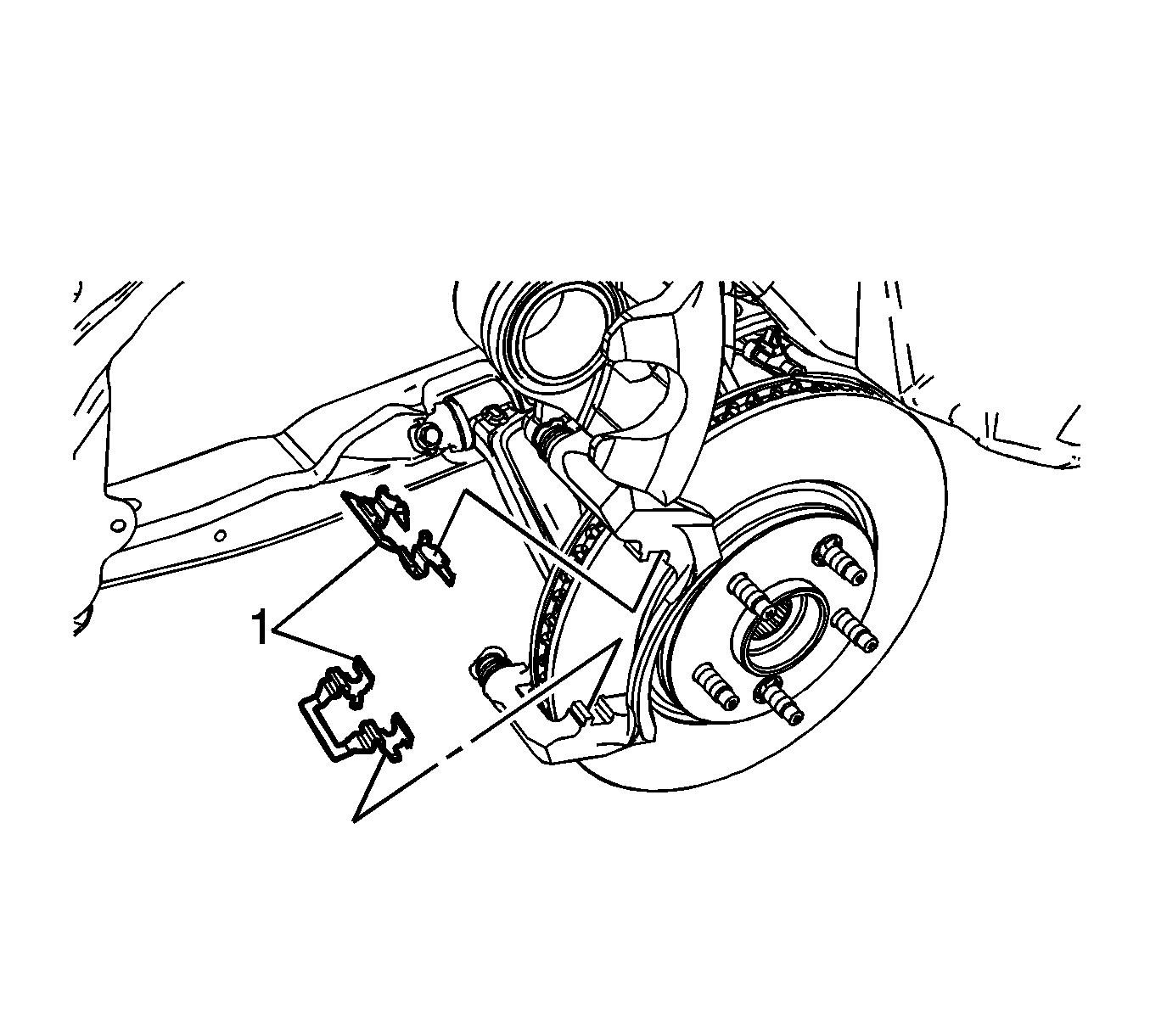Warning: Refer to Brake Dust Warning in the Preface section.
Warning: Refer to Brake Fluid Irritant Warning in the Preface section.
Removal Procedure
- Inspect the fluid level in the master cylinder reservoir.
- If the brake fluid is midway between the maximum full point and the minimum allowable level, no brake fluid needs to be removed from the reservoir before proceeding.
- If the brake fluid is higher than midway between the maximum full point and the minimum allowable level, remove brake fluid to the midway point before proceeding.
- Raise and support the vehicle. Refer to Lifting and Jacking the Vehicle.
- Remove the tire and wheel assembly. Refer to Tire and Wheel Removal and Installation.
- Install and firmly hand tighten 2 wheel nuts to opposite wheel studs in order to retain the rotor to the hub.
- Install a large C-clamp over the body of the brake caliper with the C-clamp ends against the rear of the caliper body and against the outboard brake pad.
- Tighten the C-clamp evenly until the caliper piston is compressed into the caliper bore.
- Remove the C-clamp from the brake caliper.
- Remove the lower brake caliper guide pin bolt (1).
- Pivot the brake caliper (1) upward and support with heavy mechanics wire or equivalent.
- Remove the inboard brake pad (1).
- Remove the outboard brake pad (2).
- Remove the disc brake pad retainers (1).
- Inspect the disc brake mounting and hardware. Refer to Front Disc Brake Mounting and Hardware Inspection.

Caution: Support the brake caliper with heavy mechanic wire, or equivalent, whenever it is separated from its mount and the hydraulic flexible brake hose is still connected. Failure to support the caliper in this manner will cause the flexible brake hose to bear the weight of the caliper, which may cause damage to the brake hose and in turn may cause a brake fluid leak.


Note the location of the brake pad wear sensor.

Installation Procedure
- Apply a very thin coat of high temperature silicone brake lubricant to the brake pad hardware mating surfaces of the caliper bracket.
- Install the disc brake pad retainers (1).
- Install the inboard brake pad (1).
- Install the outboard brake pad (2).
- Remove the support and pivot the brake caliper to the installed position.
- Install the lower brake caliper guide pin bolt (1) and tighten to 35 N·m (26 lb ft).
- Remove the wheel nuts retaining the brake rotor to the hub.
- Install the tire and wheel assembly. Refer to Lifting and Jacking the Vehicle.
- Lower the vehicle.
- With the engine OFF, gradually apply the brake pedal approximately 2/3 of its travel distance.
- Slowly release the brake pedal.
- Wait 15 seconds then repeat steps 10-11 until a firm brake pedal is obtained. This will properly seat the brake caliper pistons and the brake pads.
- Fill the master cylinder reservoir to the proper level. Refer to Master Cylinder Reservoir Filling.
- Burnish the brake pads and rotors. Refer to Brake Pad and Rotor Burnishing.

Note: The wear sensor equipped brake pad must be mounted inboard of the rotor with the leading edge of the sensor facing the brake rotor during forward wheel rotation, or at the top of the pad when installed in vehicle position.

Note the location of the brake pad wear sensor.
Caution: Refer to Fastener Caution in the Preface section.

